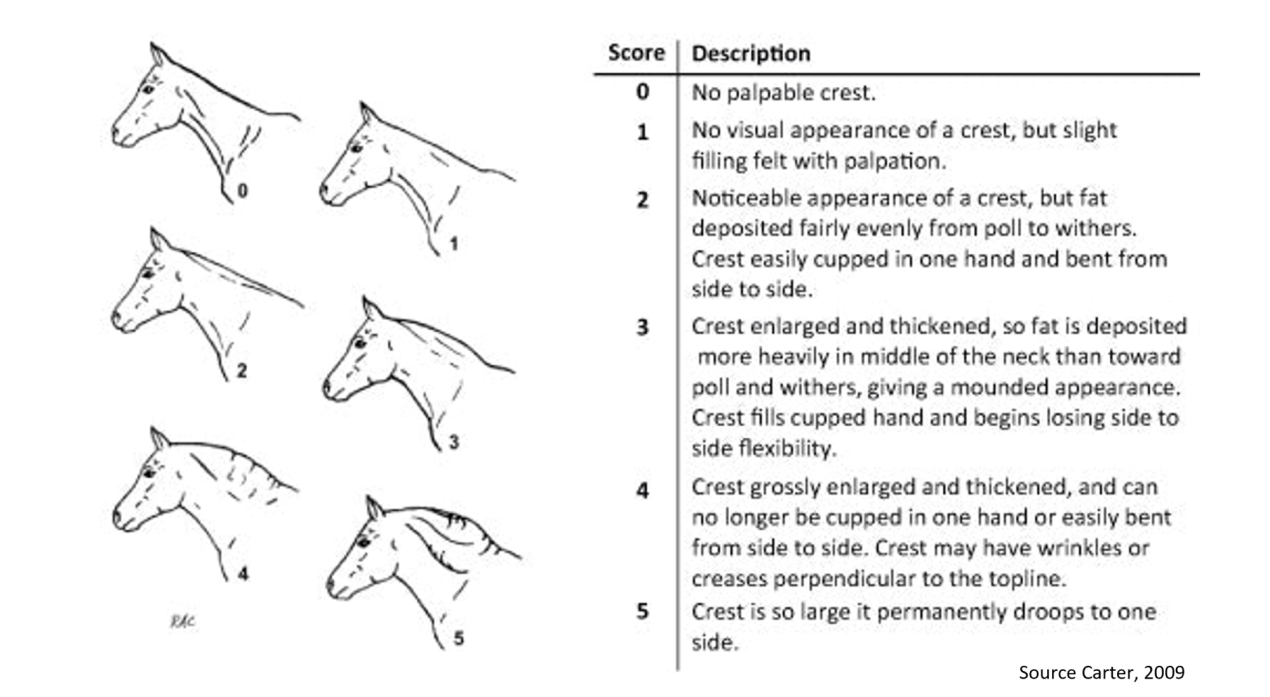Cresty Neck Scoring

Obesity in horses remains a prevalent issue in the UK, not only in the leisure sector of horses and ponies, but also in the sports and elite horse sectors. Obesity can increase the risk of metabolic conditions such as equine metabolic syndrome (EMS) and laminitis.
Regularly monitoring your horse’s weight and condition is crucial to managing weight and maintaining a healthy body condition. Alongside body fat scoring (BFS), cresty neck scoring can come in very handy when monitoring weight and the risk of metabolic conditions. It is important to look for the difference between muscle and fat depositing above the nuchal ligament so you can tell the difference between topline and a cresty neck.
Not all horses with metabolic conditions are overweight, taking a look at fatty deposits along the nuchal ligament (a cresty neck) can be a useful factor when looking at the risk of insulin dysregulation in horses. It has been found that horses and ponies with a cresty neck score of 3 or above are 5 times more likely of having issues with insulin regulation. It has also been found that cresty neck scores are more predictive of insulin dysregulation than BFS which may be relevant to diagnosing conditions such as EMS.

Feed Advice Form
Complete our online form to receive a detailed nutritional plan for your horse or pony from one of our registered nutritionists.
Quick Feed Finder
Use our quick and easy feed finder as a guide to select the right feed for your horse or pony.












